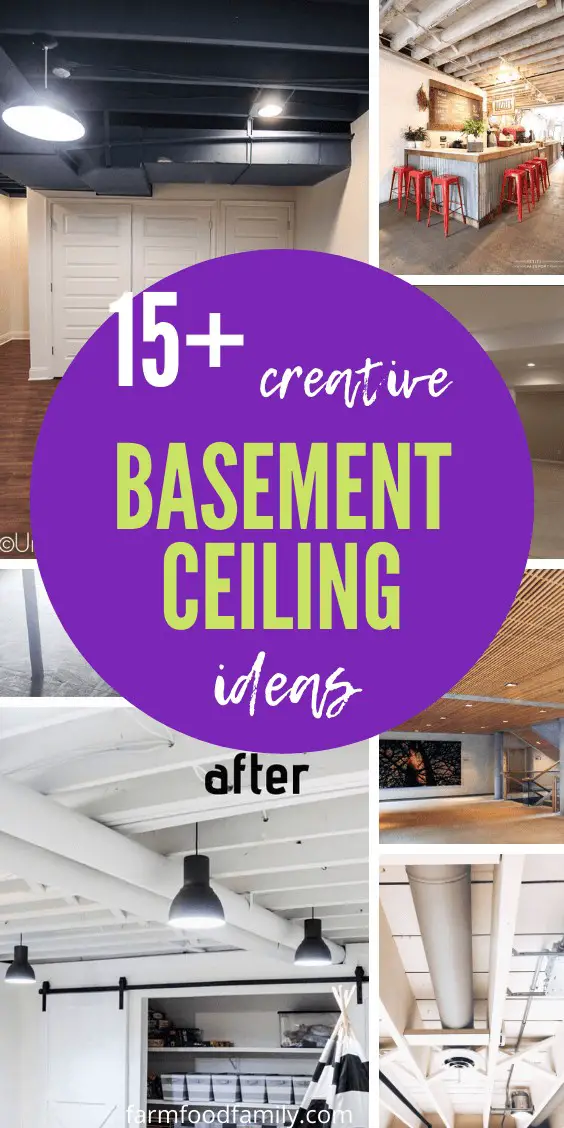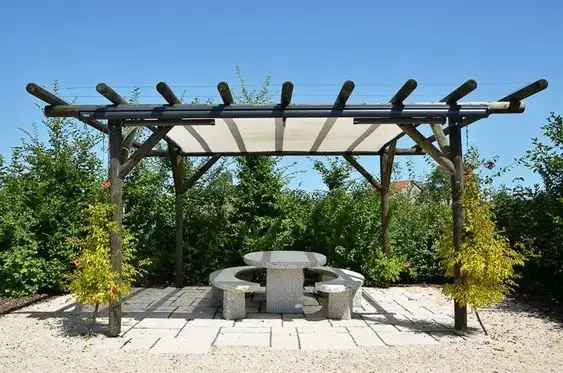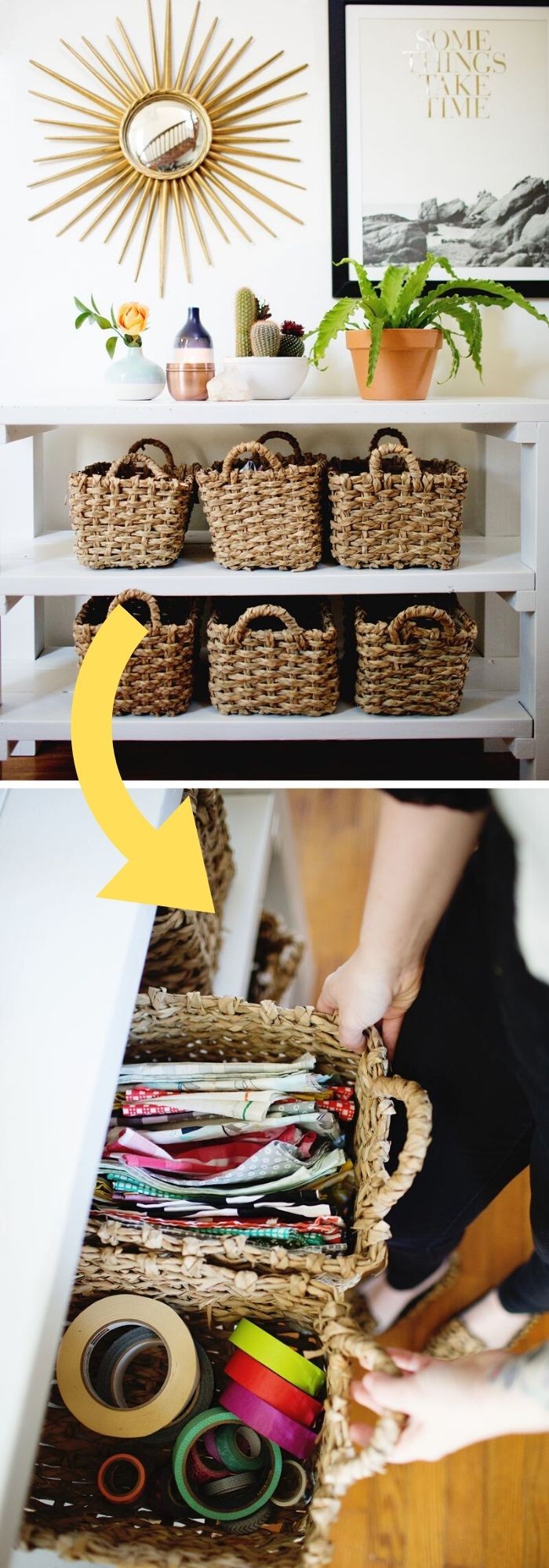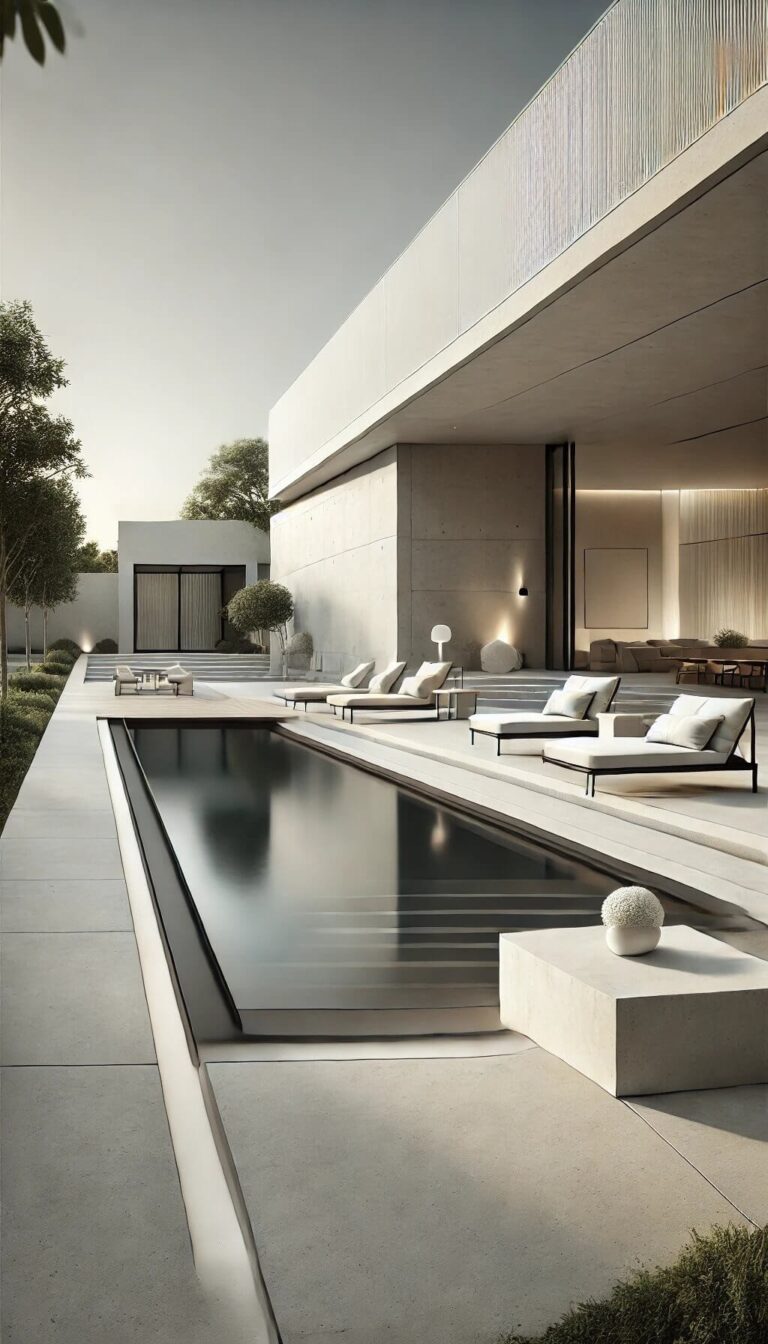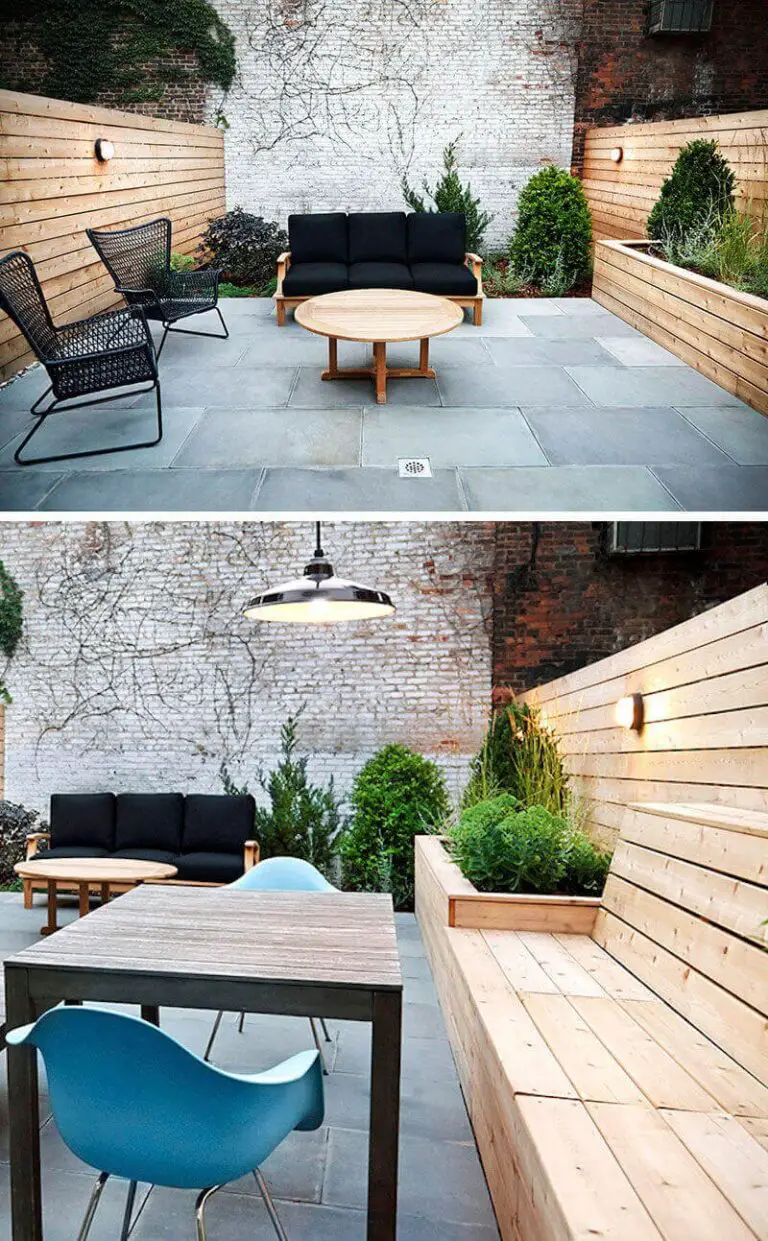20+ Inexpensive Basement Wall Ideas And Designs (With Pictures)
When it comes to finishing your basement, one of the most crucial decisions you’ll make is what to do with the walls. With so many options available, it’s easy to feel overwhelmed. In this article, we’ll explore 20 different ideas for finishing your basement walls, covering everything from concrete and cinder block to finished and temporary solutions. We’ll also touch on some popular design trends and provide tips on how to make your basement walls look their best.
From rustic to sleek, there’s something for every style and budget.
Basement wall ideas without drywall.
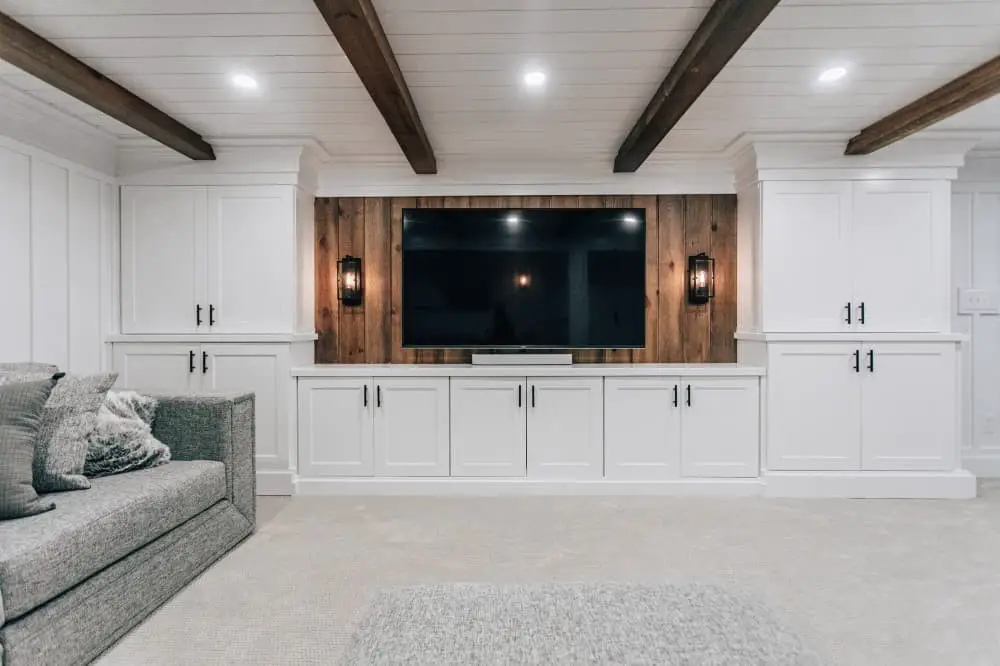
Wood paneling is an excellent choice for finishing a basement, as it creates a cozy and inviting atmosphere. Its installation process is straightforward, and it’s widely available at most home improvement stores. In addition to wood paneling, concrete is another viable option for basement walls. While it offers durability and ease of cleaning, it can feel cold. To combat this, consider painting the concrete walls with a warm color scheme.
For added insulation and temperature control, consider using cork board or insulation panels on your basement walls. These materials will help regulate your basement’s temperature, keeping it warm in the winter and cool in the summer.
Concrete basement wall ideas.
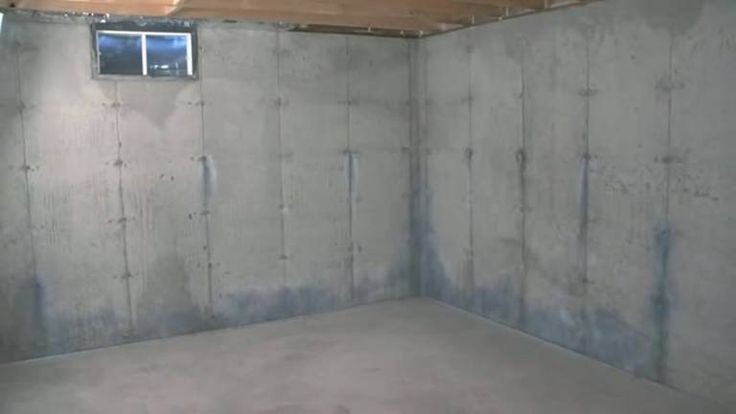
When it comes to finishing basement walls made of concrete, you’re spoiled for choice. To get started, consider these creative options:To add an extra layer of protection and style, paint or seal the concrete walls to keep moisture at bay and prevent unsightly stains from forming. For a more substantial finish, install paneling over the concrete walls, which will not only provide insulation but also give your basement a polished look.
Alternatively, hang tapestries or other fabric decorations directly on the walls to add some visual interest. If you’re feeling artistic, consider stenciling or painting designs directly onto the concrete for a unique touch. For a more ambitious project, create a mural on one or more of the walls – it’s a great way to add personality and character to your basement space.
Finally, install wainscoting or other types of trim to give your basement walls a finished look that complements the rest of your home.
Cinder block basement wall ideas.
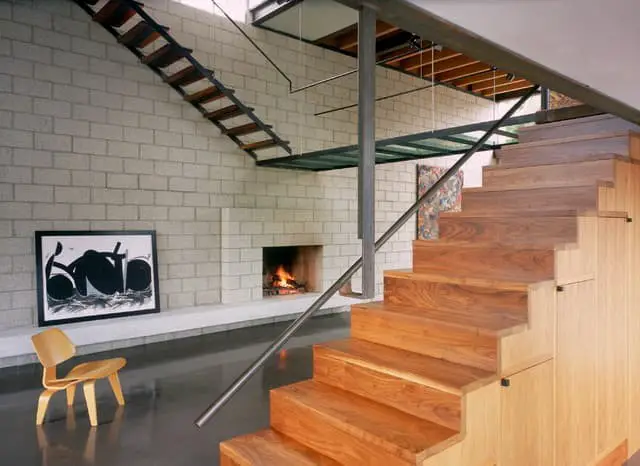
When it comes to finishing cinder block basement walls, there’s no one-size-fits-all solution. One approach is to use the blocks as the foundation for a drywall or plywood installation, which can provide a smooth finish. Alternatively, you could opt to leave the cinder blocks exposed, which can add a unique touch to your basement design. While this latter option may require more creativity and effort upfront, it can result in a distinctive look that sets your space apart.
Ultimately, the key is to be open-minded and willing to experiment with different approaches to find one that suits your style and budget.
Finished basement wall ideas.
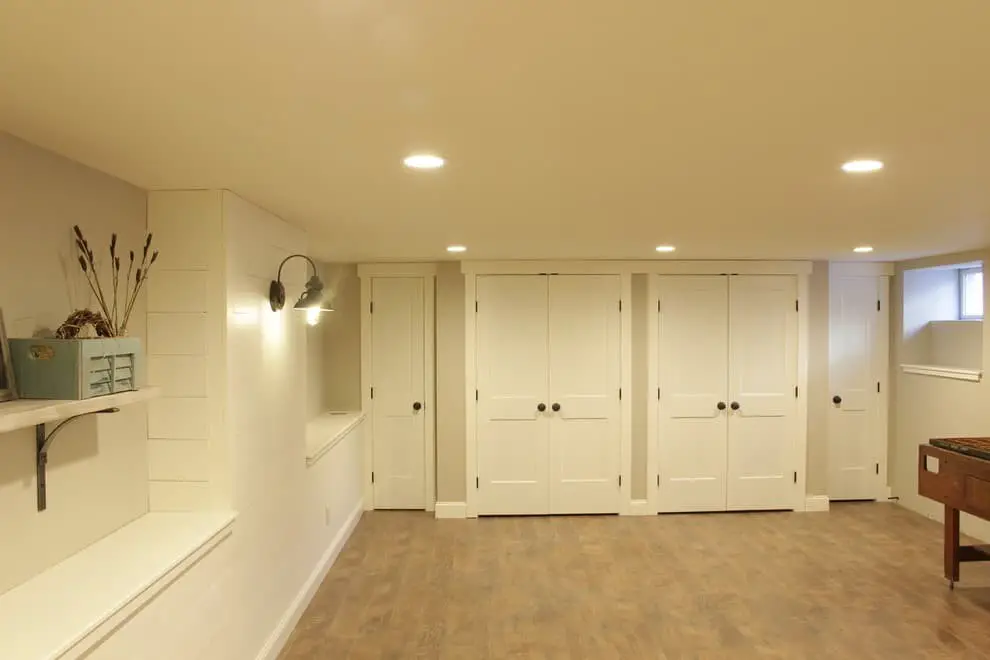
Finishing a basement can be achieved in various ways, but two popular methods are paneling the walls with wood and drywalling them. The former creates a cozy atmosphere reminiscent of an upstairs living room, whereas the latter provides a quick and easy way to achieve a finished look. When it comes to paneling, homeowners have the option to use pre-fabricated panels or individual boards, offering flexibility in their approach.
Drywalling, on the other hand, requires some basic knowledge of how to hang drywall but can be completed relatively quickly. Both methods can produce impressive results and enhance the overall aesthetic of a basement space.
Unfinished basement wall ideas.
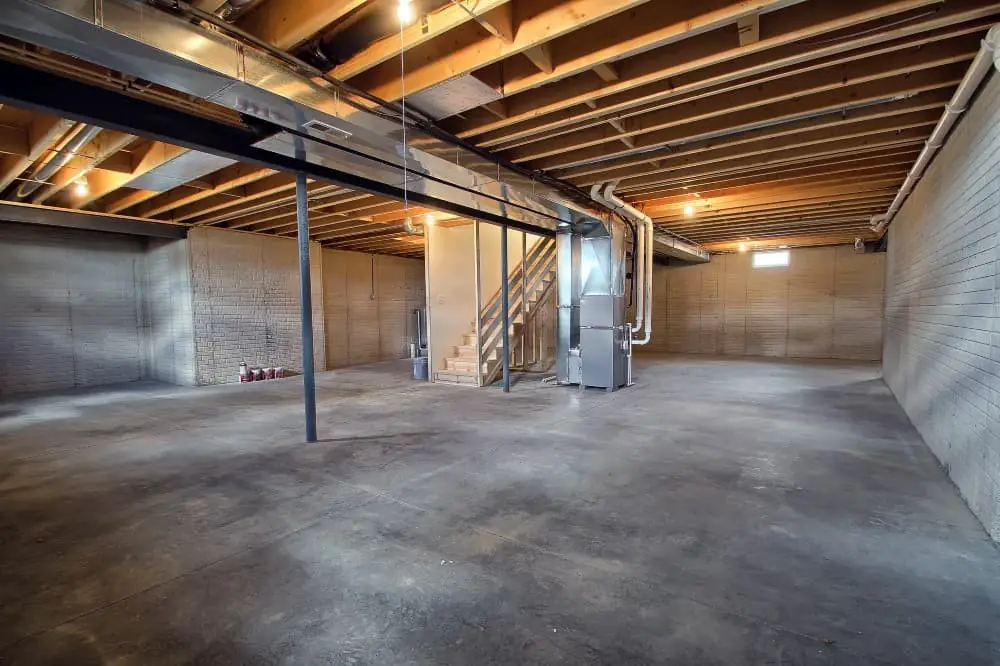
Before embarking on an unfinished basement wall ideas project, it’s essential to have a clear understanding of what you want to achieve. Start by defining the purpose of the space and visualizing how you’ll utilize the area. This will help guide your decisions regarding furniture arrangement, lighting, and overall aesthetic. Once you have a solid plan in place, consider the materials you’ll need.
While traditional options like studs, drywall, and paint are popular choices, there are many alternative solutions available, including paneling, drop ceilings, and even wallpaper. The key is to select materials that align with your design vision and functional requirements. Lighting plays a crucial role in setting the tone for your basement space. You can opt for overhead lighting, task lighting, or accent lighting, each offering unique benefits and drawbacks.
By carefully evaluating your options, you’ll be able to create an atmosphere that’s both functional and inviting. After deciding on materials and lighting, it’s time to turn your attention to furniture. Will you prioritize comfortable seating? Do you envision a TV or gaming area? Alternatively, would you like to create a home office or reading nook? Lastly, don’t underestimate the importance of adding personal touches to your space.
Hang framed photos, display art pieces, or even incorporate sculptures to make your basement feel truly unique and reflective of your personality.
Cement basement wall ideas.
When it comes to covering or paneling the walls of a concrete basement, there are many options available that can give the space a finished look. One of the most cost-effective ways is to use concrete paint, which offers a range of colors to choose from and can be matched to any décor. For a more rustic or cozy feel, consider wood paneling or exposed brick veneer. Alternatively, stone wall panels or ceramic tile can add a touch of luxury to the space.
If you want to add some visual interest, stencils or wallpaper are great options that offer endless possibilities in terms of design and pattern. Overall, there’s no shortage of ways to cover and enhance the walls of your basement.
Rustic basement wall ideas.
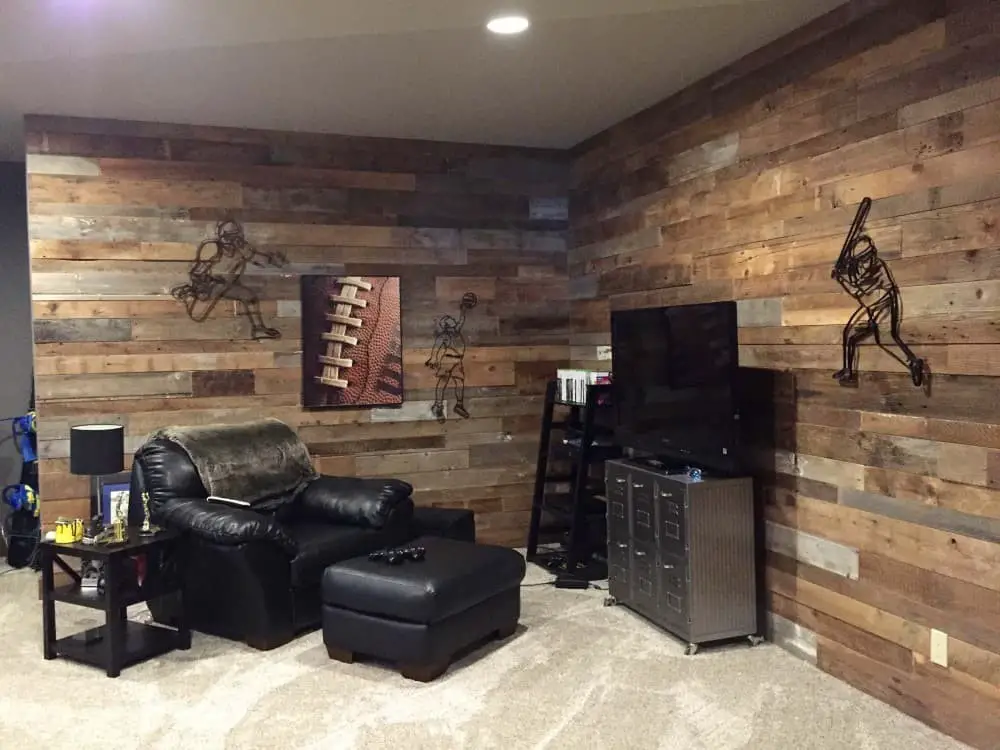
When it comes to infusing rustic charm into your basement’s walls, there are multiple approaches to consider. Painting is a straightforward option, but wallpaper or wall decals can also be used to achieve a cozy, rustic aesthetic. Alternatively, you could opt for a statement piece by incorporating reclaimed wood or stone accents. Regardless of the method you choose, adding rustic elements to your basement walls is an effective way to imbue the space with personality and character.
Shiplap basement wall ideas.
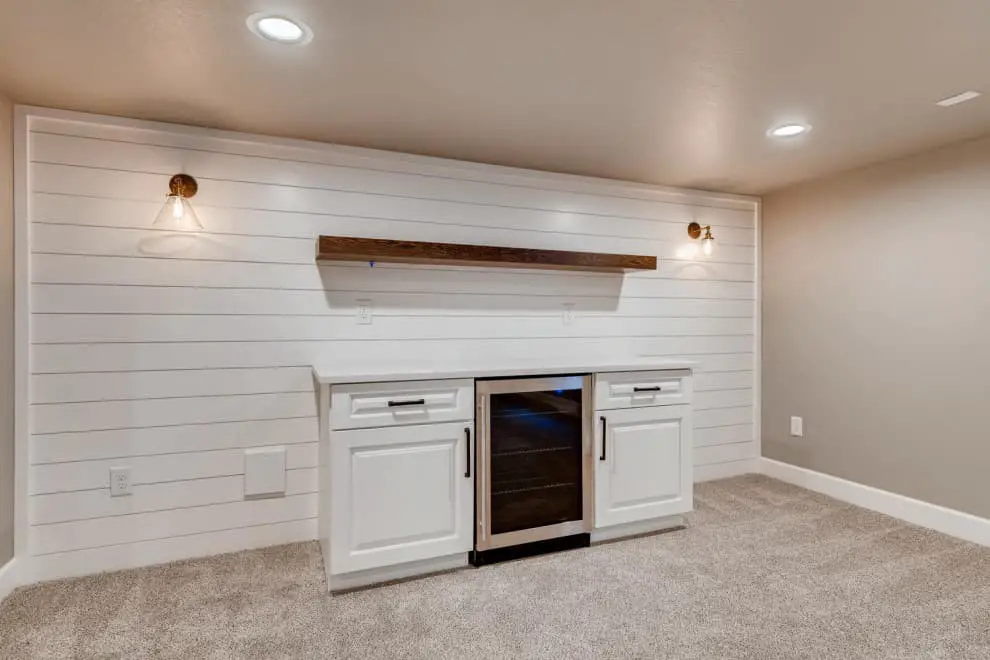
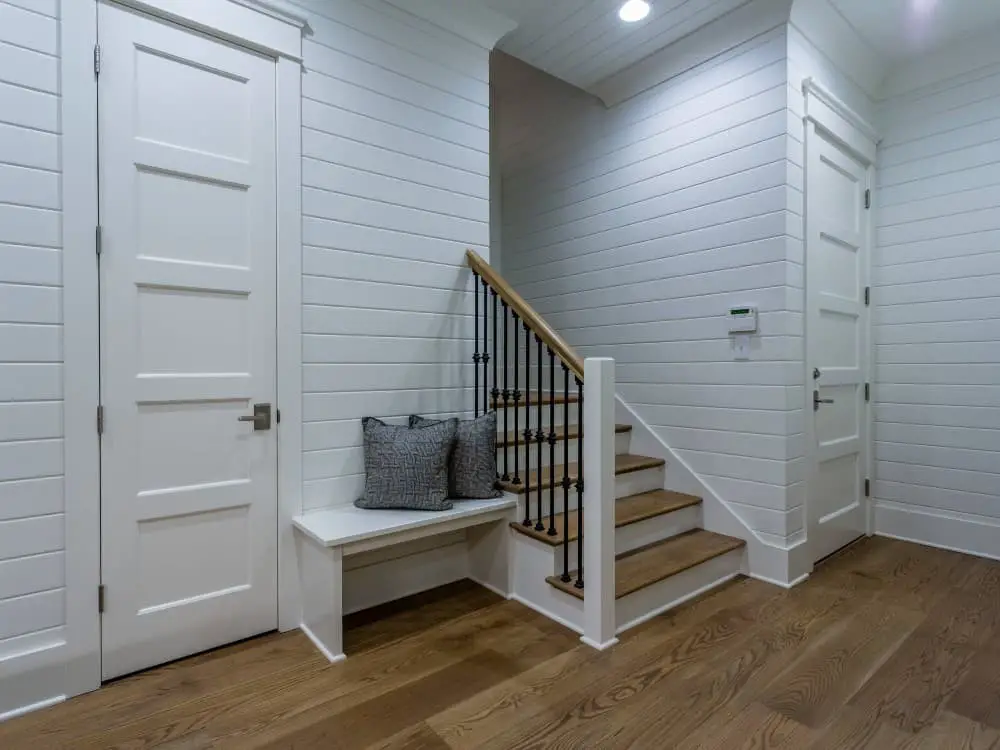
Finishing your basement walls with a touch of rustic charm is easier than you think. Shiplap, a type of overlapping board siding, can add a unique and stylish flair to any space. While it may be a bit pricier than other options, shiplap’s durability ensures that it will last for many years, making the initial investment worthwhile. Plus, installation is relatively straightforward, eliminating the need for extensive labor costs.
When selecting the right type of shiplap for your basement walls, you’ll have a range of choices between traditional wood boards and modern synthetic materials. For a more budget-friendly approach, consider using medium density fiberboard (MDF) instead of real wood – it’s strong, durable, and significantly cheaper. Once you’ve chosen the perfect material, it’s time to decide on a color.
Shiplap comes in a variety of hues, allowing you to find a shade that harmonizes with your space’s existing décor. If you’re unsure about which color to choose, consult with a professional painting contractor for expert advice.
Temporary basement wall ideas.
Need quick and budget-friendly solutions to create a temporary barrier between your basement’s floors and walls? Look no further! Here are a few clever ideas to get you started, all of which can be easily installed without breaking the bank.
Drywall panels
For a cost-effective and straightforward solution, consider installing drywall panels as temporary walls. Their affordability and ease of installation make them an attractive option for many. To get started, simply attach the panels to the studs of your existing walls using screws – and you’ll be ready to go in no time.
Plywood sheets
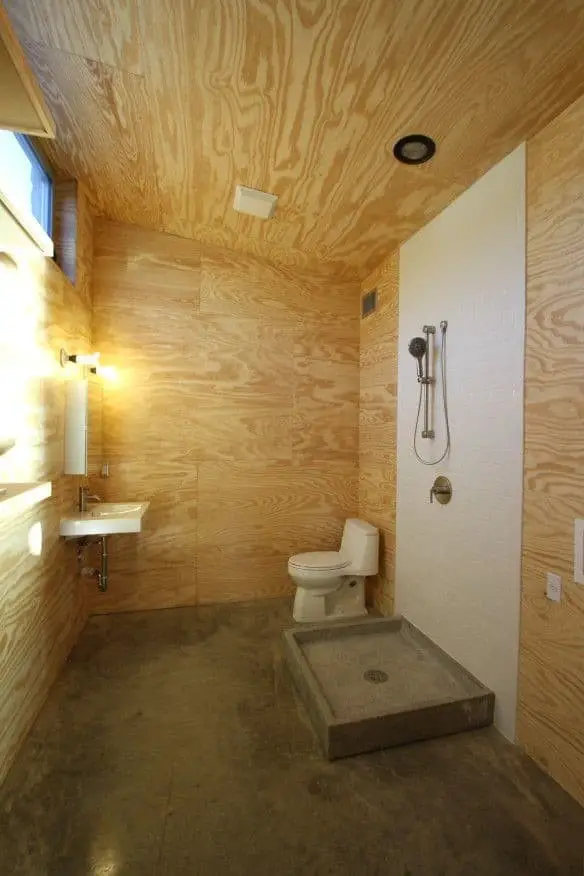
When it comes to creating temporary partitions, another viable solution is to utilize plywood sheets. By attaching these sheets to the existing wall studs using screws or nails, you can establish a sturdy foundation for your makeshift barrier. If desired, you can then conceal the plywood with drywall panels or other finishes to achieve a seamless integration with your existing architecture.
Construction fencing
For those seeking a more robust solution, construction fencing provides a reliable alternative. Comprising metal or plastic materials, this type of fencing allows for straightforward installation via posts and ties, making it an ideal choice for heavy-duty applications.
Temporary partitions
Temporary partition options for your event or workspace include kits designed to be quickly set up, providing versatile barriers that can be easily disassembled when no longer needed. These self-contained units arrive ready for assembly, requiring minimal effort from you, ensuring a seamless transition between uses.
Curtain rods
A cost-effective way to create temporary basement walls is by employing curtain rods. To execute this solution, start by installing a curtain rod across the width of your basement opening. Next, hang curtains from it. This approach not only offers a level of privacy but also permits natural light to enter the space, making it an attractive option for those seeking a budget-friendly and quick fix.
Basement TV wall ideas.
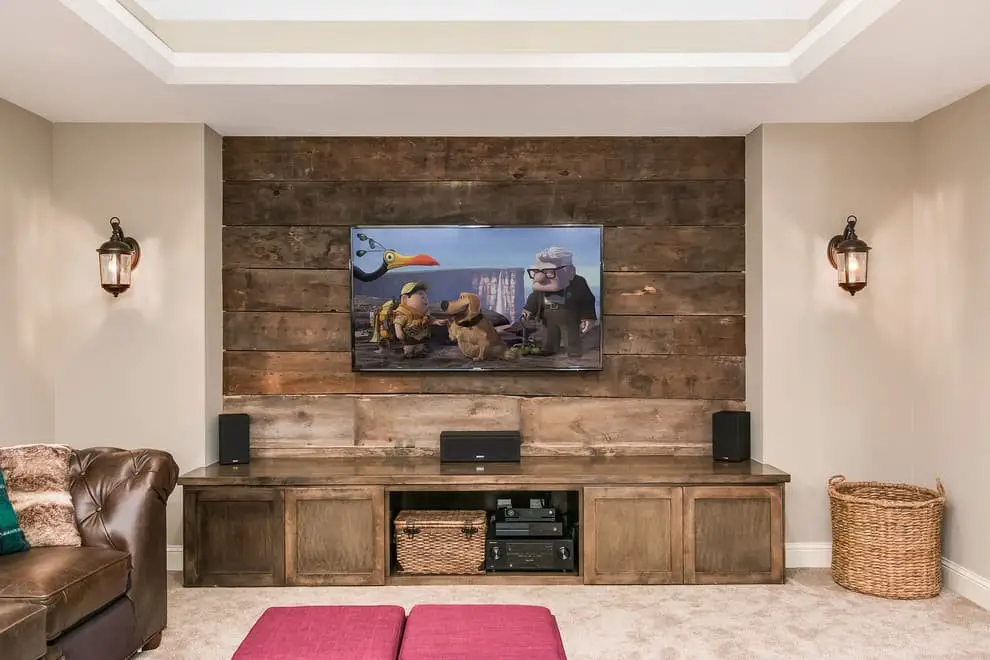
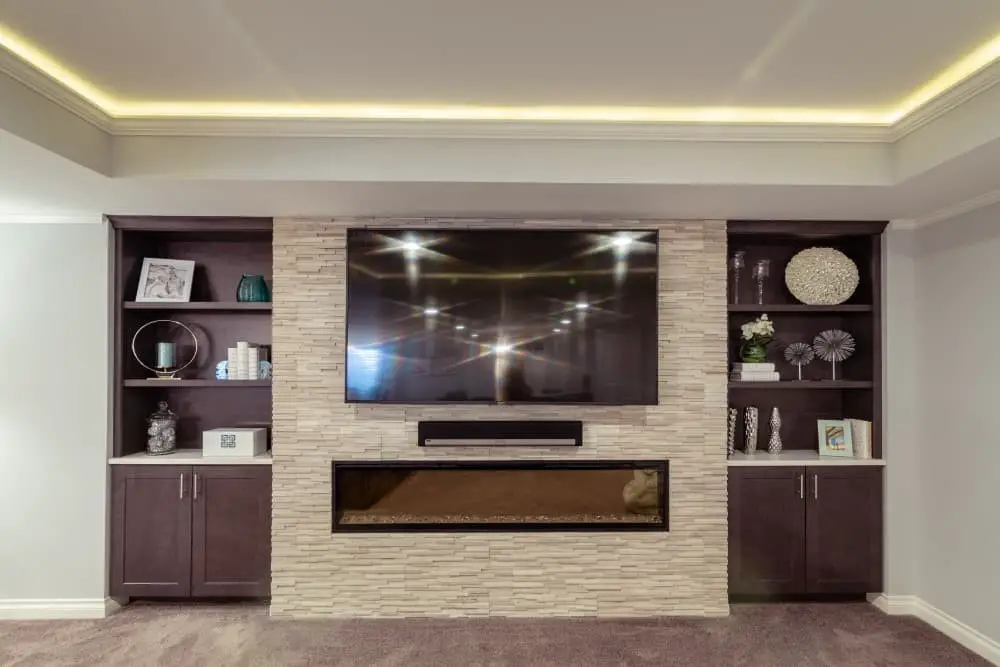
When considering adding a television to your basement, several factors come into play. The first and most important is the room’s size and layout. A larger basement can accommodate a wall-mounted TV, providing ample space for movement and creating a focal point in the room. On the other hand, a smaller basement might benefit from a table-top television, allowing for continued freedom of movement and serving as a hub for activities like gaming or working on a computer.
In addition to these physical considerations, you should also think about the lighting in your basement. If natural light is abundant, an LED TV with built-in backlighting can help reduce glare and provide an even illumination source. Conversely, if your basement receives limited natural light, an LCD TV without backlighting might be the better choice. Finally, selecting the right-sized television for your space is crucial.
Measure the available area to determine the optimal screen size, as a television that’s too small or too large can detract from the viewing experience. By taking these factors into account, you’ll be able to find the perfect TV for your basement and create an enjoyable entertainment space.
Basement cinder block wall ideas.
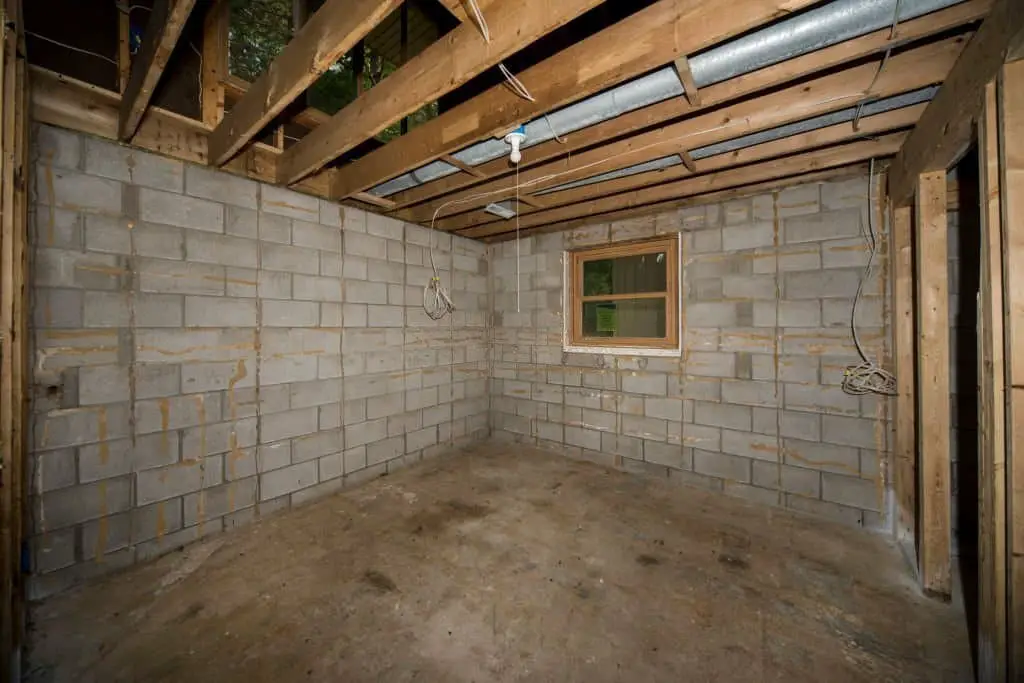
Cinder block walls are a staple in many construction projects, particularly for foundation and basement walls. While they provide strength and durability, their plain appearance can be uninspiring. Fortunately, there are ways to elevate the aesthetic appeal of cinder block walls.
One approach is to give it a fresh coat of paint. This can add a pop of color or create a design using stencils.
For a more permanent solution, consider tile or stone veneer installation, which can greatly enhance the overall look and feel of your basement.
In addition to aesthetic improvements, cinder block walls can also serve as a foundation for creative storage solutions. By building shelves that fit snugly between the blocks, you can create a functional and organized space for storing boxes, bins, or other items that need to be kept out of the way.
This DIY project requires minimal tools and expertise, making it accessible to anyone looking to add some practicality to their basement.
Basement accent wall ideas.
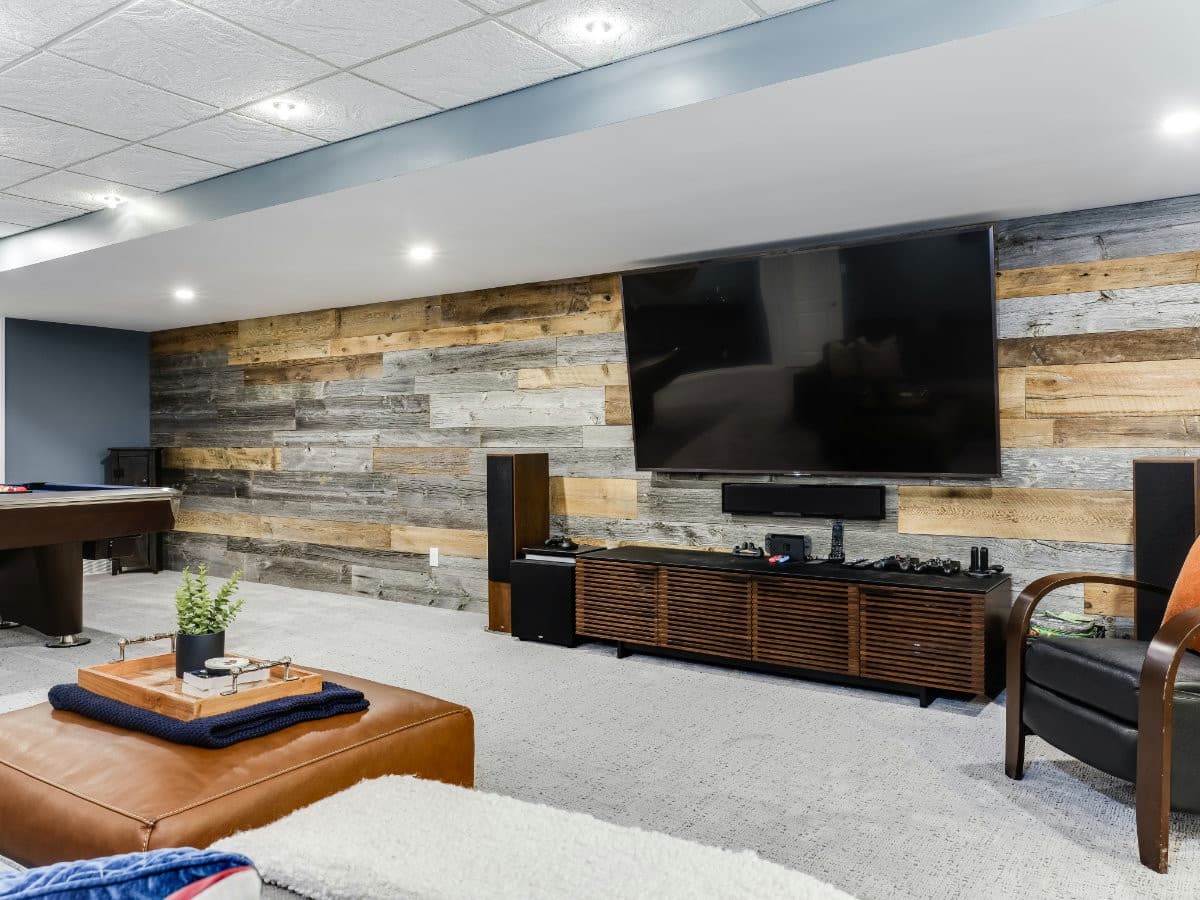
When considering how to add an accent wall to your basement, there are several creative approaches to explore. From paint to wallpaper to fabric, each option offers a unique way to inject personality into the space. Paint is a popular choice due to its affordability and ease of application. With a wide range of colors and finishes available, you can effortlessly achieve the desired aesthetic.
Wallpaper also presents an attractive alternative, boasting a diverse array of patterns and hues to choose from. Notably, wallpaper is easy to install and can be easily removed if you decide to switch things up in the future. Fabric is another option that can add texture and visual interest to your basement. By selecting from various fabric types, you can create an accent wall that adds depth and character to the space.
Like paint and wallpaper, fabric is relatively simple to apply and can be removed if needed.
Basement stairway wall ideas.
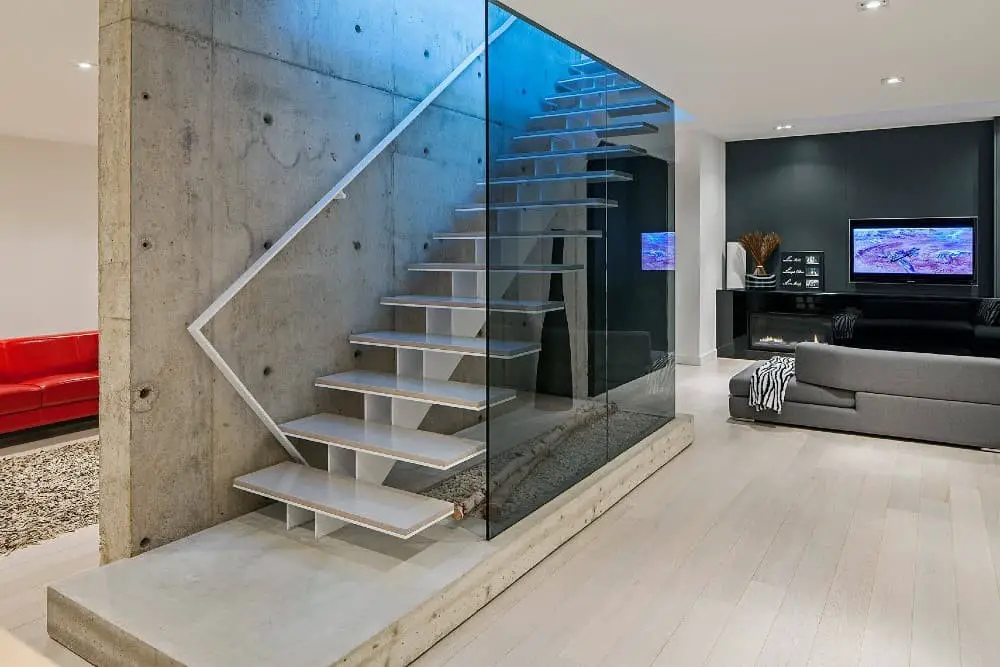
When it comes to designing the wall of your basement stairway, there are several key factors to consider. First and foremost, you need to decide on the material that best suits your vision. You have a wide range of options available, including wood, drywall, and even concrete. Once you’ve chosen a material, you’ll want to think about the design itself. Do you prefer a simple, single-color look or something more elaborate?
If simplicity is what you’re after, consider using paint or wallpaper to create your desired aesthetic. However, if you’re looking for something with a bit more flair, stencils and decals can be great options. These versatile tools allow for endless design possibilities and even permit DIY creativity. Having decided on both material and design, the final step is to bring your vision to life. Will you be hiring a professional or taking on the task yourself?
If the latter, it’s essential to ensure you have all necessary tools and materials before commencing work. Additionally, pace yourself and avoid rushing – this project demands attention to detail, so take your time and strive for perfection.
Brick basement wall ideas.
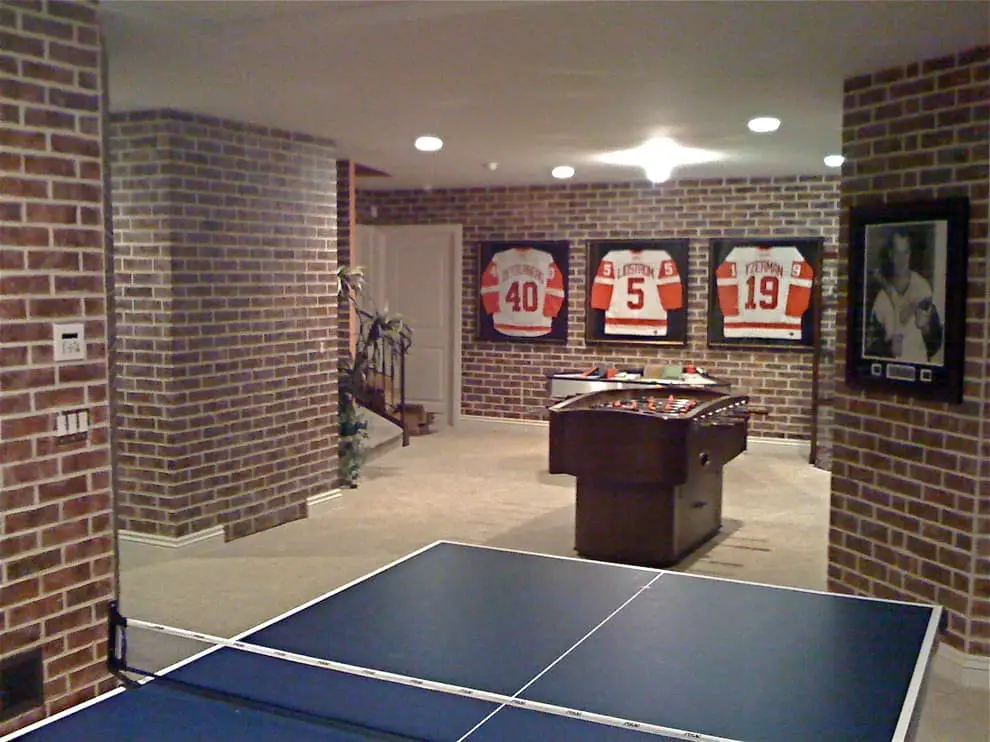
If you’re looking to revitalize a brick basement wall that’s seen better days, consider these innovative solutions to bring new energy to the space. One approach is to introduce shelving units, which can serve both functional and aesthetic purposes. Not only will this provide a thoughtful display area for treasured items, but it’ll also add depth and visual interest to the room.
Alternatively, you could repurpose the brick wall as a vibrant chalkboard, fostering creativity and collaboration with loved ones while keeping essential reminders and notes within arm’s reach.
Basement bar wall ideas.
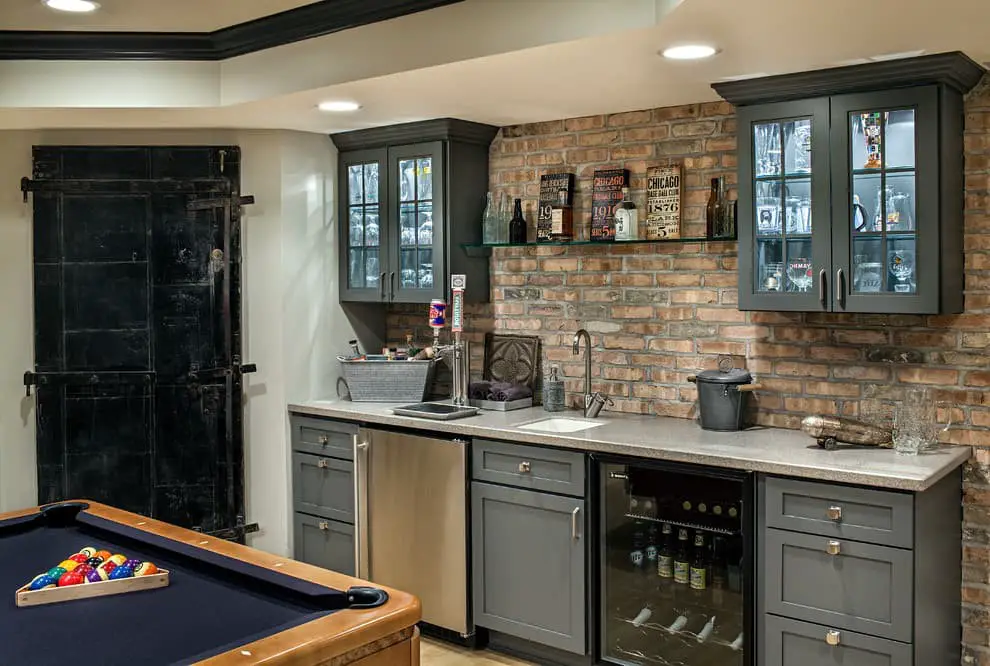
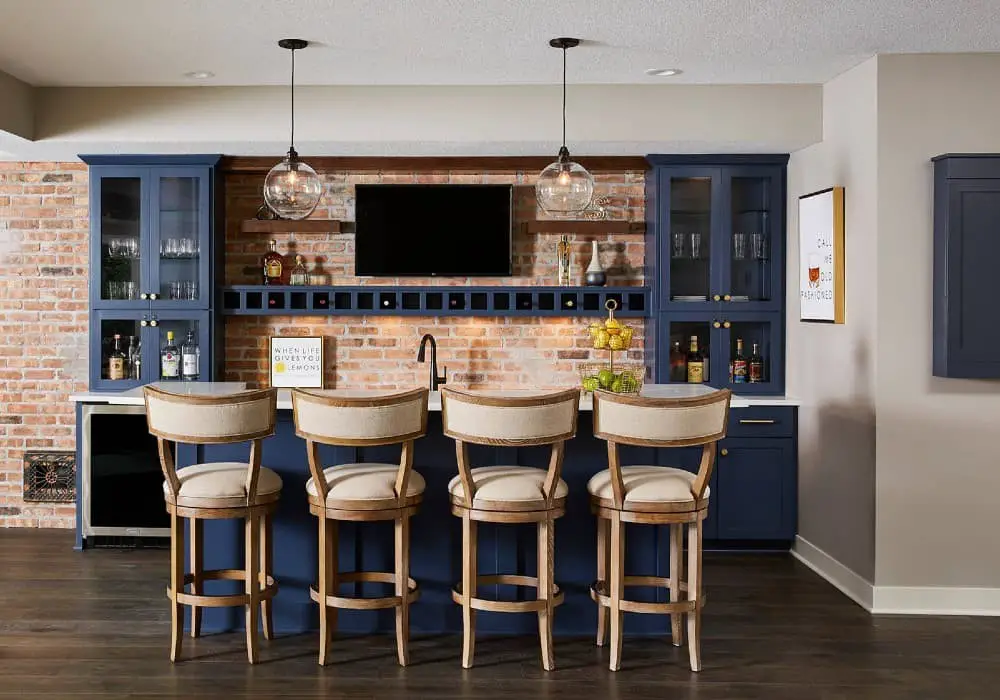
When it comes to decorating your basement bar, the possibilities are endless. You can opt for a classic look or think outside the box and create something truly unique. To get you started, here are some creative ideas to consider:Transforming vintage posters or photos into art pieces is an excellent way to inject personality into your space. For a more interactive approach, use chalkboard paint to write messages, draw pictures, or even create a menu for your bar.
For a polished look, consider installing paneling or wainscoting on your walls. Alternatively, you can make a statement with bold wall colors or opt for a more subtle hue that complements the rest of your decor. Adding mirrors is another great way to create the illusion of a larger space and brighten up the area. Shelving units are also a must-have for storing essential bar supplies like bottles, glasses, and equipment.
For an instant pop of color and pattern, hang tapestries or curtains on your walls. Decals and stickers can also be used to personalize your space and add some fun flair. Finally, don’t forget about the importance of lighting fixtures in setting the mood for your basement bar. And if you want to bring a touch of nature indoors, consider adding some plants to your decor. They’ll not only purify the air but also create a cozy atmosphere that’s perfect for socializing with friends.
Basement partition wall ideas.
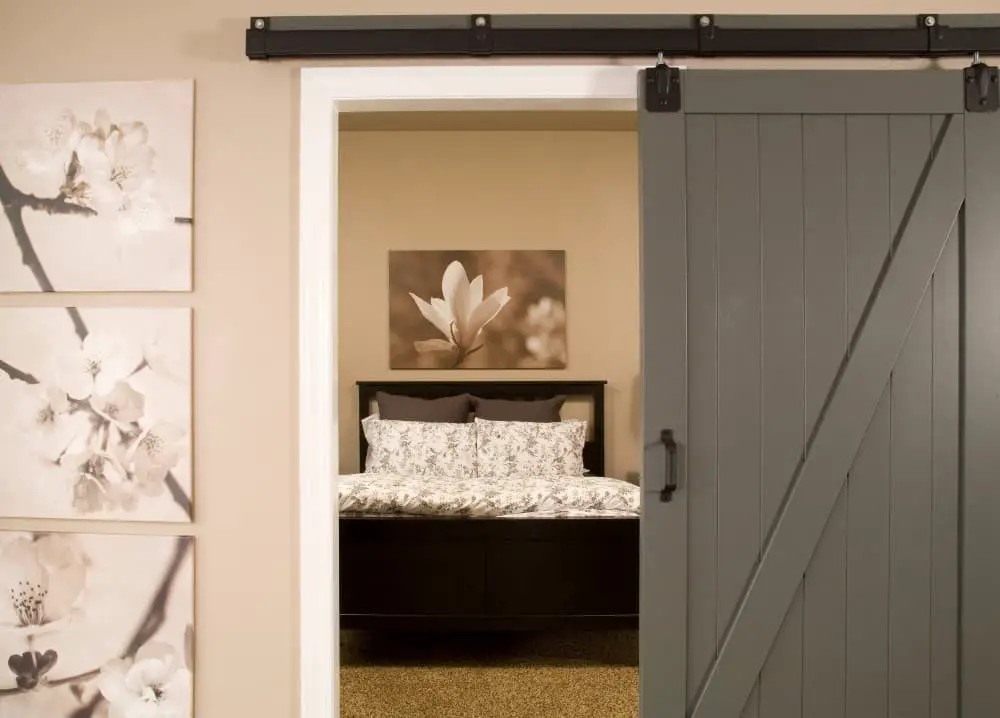
Are you tired of having an underutilized basement that’s just collecting dust? If so, it’s time to turn it into a functional space that suits your needs! Partitioning your basement can be a great way to create extra storage, a home office, or even an entertainment area. When it comes to partitioning, there are several factors to consider. First and foremost, you need to decide on the type of walls you want to use.
Temporary walls are perfect for those who like flexibility and may not be sure about their long-term plans. These can be made from materials like plywood, drywall, or even fabric. On the other hand, permanent walls offer a more finished look and provide structural support. The material you choose will depend on your specific needs and preferences. For example, if you’re looking to create a storage area, you’ll want something durable and easy to clean.
If you’re aiming for a more decorative look, you may prefer materials like brick or stone. Next, you need to think about the size of your partitions. They can range from two feet wide to eight feet wide, so it’s essential to measure your space carefully before making a purchase. After choosing your partition size, it’s time to decide on the layout of your basement. You might choose a single wall, two walls, or even three walls.
Consider how you plan to use the space and what you want to divide it into before making your final decision. Doors are also an important consideration. You can opt for sliding doors, hinged doors, or even pocket doors. Think about which type will best suit your needs and available space. Lastly, you need to select the hardware that will accompany your doors. This could include knobs, handles, or locks. Make sure to choose hardware that complements your basement’s style and functionality.
Basement staircase wall ideas.
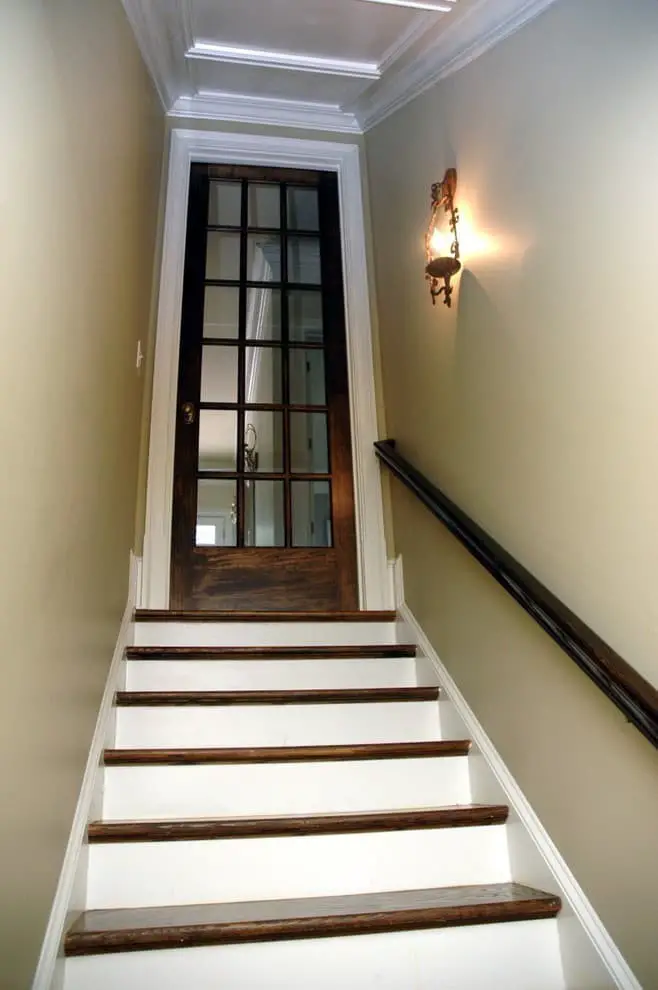
Transforming a dull basement staircase into an artistic masterpiece is just a few creative steps away. To start, consider giving your staircase a fresh coat of paint. A single bold color can make a statement, or you can get creative with multiple colors to create a unique design. If painting isn’t your forte, don’t worry – there are always professionals who can lend a hand. To take your staircase to the next level, think about adding some decorative elements.
Handrails and newel posts can add visual interest, while decorative molding along the sides of the staircase can give it a sophisticated feel. For an even greater impact, consider installing new lighting fixtures. The options are endless – from modern LED strips to traditional pendant lights – so you’re sure to find something that suits your style. Finally, don’t forget about functionality.
Adding storage solutions like shelves or cabinets can help keep clutter at bay and make the most of the space. With a little imagination and effort, your basement staircase can go from boring to beautiful.
Basement half wall ideas.
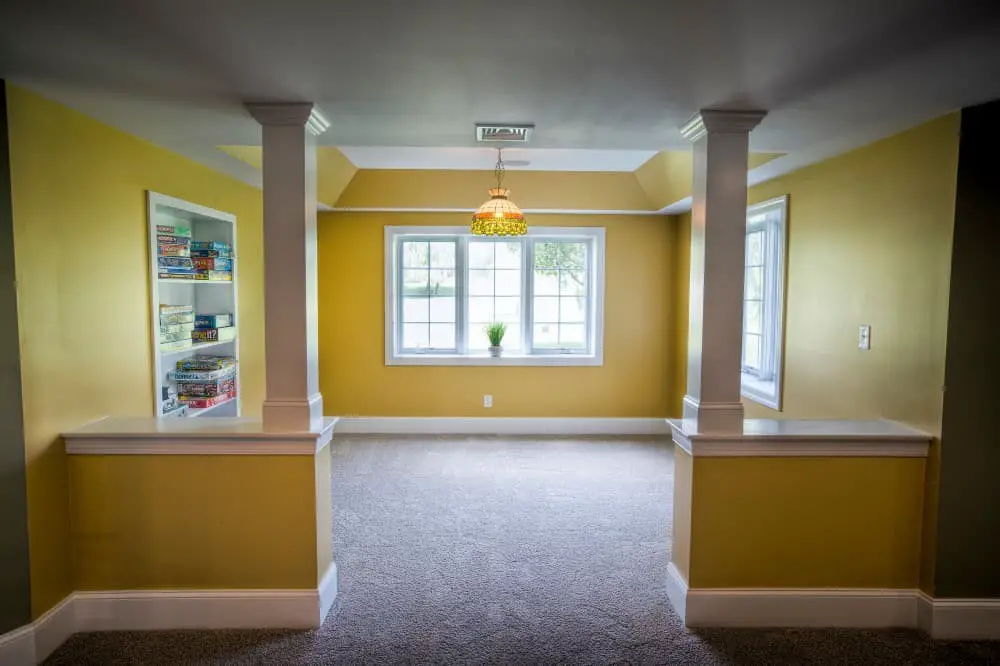
Consider introducing a half-wall to your basement design to inject some personality and functionality into the space. Half-walls are versatile and can be used in various ways to create visual interest and define different areas. One popular application is as a divider between the living zone and the rest of the basement, offering privacy and separating spaces.
Another effective use is as a structural support for bars or countertops, providing storage while keeping these features from dominating the room. For a more innovative approach, consider using half-walls to craft a loft area, thereby expanding usable space and introducing a new level of living.
What is the best wall material for a basement?
When it comes to choosing materials for your basement walls, there are several options to consider. Concrete, brick, and stone are three popular choices, each with its own set of benefits and drawbacks. It’s essential to select the right material for your specific needs, as this will impact both the appearance and functionality of your basement. Concrete is a practical choice due to its durability and ease of maintenance.
However, it does require proper sealing to prevent moisture damage, which can be a significant concern. On the other hand, brick offers impressive durability as well, but at a higher cost. Additionally, brick installation can be challenging for those without prior experience. Stone is a stunning option that provides a unique aesthetic appeal, yet it’s also one of the most expensive choices. Furthermore, stone installation is best left to professionals due to its complexity.
Ultimately, choosing the right material for your basement walls depends on your priorities and circumstances.
What can I put on my basement walls?
When it comes to finishing your basement walls, you’re faced with a variety of options. Painting, adding paneling, and installing drywall are just a few popular choices. However, before making a decision, there are several factors to consider.
One crucial consideration is the climate in your area. In regions with high humidity, it’s essential to choose materials that can resist moisture absorption.
For instance, if you live in an area prone to dampness, painting or paneling might be a better option than drywall, which can foster mold and mildew growth.
Another important consideration is the aesthetic you’re aiming for in your basement. If you want to create a cozy atmosphere, a bright paint color could be the way to go. On the other hand, if you’re striving for a modern look, dark paneling might be the better choice.
How can I make my basement walls look better?
When it comes to enhancing the appearance of your basement walls, there are several options to explore. Painting is one effective way to brighten up the space, while wall paneling or hanging tapestries and other decorative elements can add texture and visual interest. For bare and unfinished walls, incorporating insulation can not only improve energy efficiency but also contribute to a more comfortable living environment.
Additionally, installing trim around the edges of the walls can provide a polished finish and help create a cohesive look.
What is the cheapest way to finish a basement wall?
For a more permanent solution, consider incorporating paneling or applying a waterproof sealant to your basement walls. Paneling can be sourced from most home improvement stores and is relatively straightforward to install. Alternatively, painting the walls with a specialized waterproof coating will offer some protection against moisture, although it may not provide complete waterproofing. A more comprehensive approach involves installing a vapor barrier on the walls before finishing them.
This measure helps maintain a dry environment, inhibiting mold and mildew growth.
How do you cover concrete walls in a basement without drywall?
When it comes to concealing concrete walls in a basement without drywall, you have several viable alternatives. Wood paneling, lath and plaster, and masonry veneer are popular choices, each boasting its own strengths and weaknesses. For instance, wood paneling is a budget-friendly option that’s relatively easy to install, but it may not be the best choice if your basement is prone to moisture issues.
Lath and plaster, on the other hand, offers greater durability than wood paneling, although it does come with a higher price tag and more complex installation process. Masonry veneer, meanwhile, provides a long-lasting solution that’s low maintenance, but it’s also one of the pricier options.
Conclusion
Transforming your basement into a stylish and functional space is easier than ever with the numerous creative options available. From storage solutions to new living areas, there’s an abundance of basement wall ideas that can help you achieve your desired outcome. Whether you’re looking to create a cozy retreat or a modern entertainment hub, the possibilities are endless.
With such a wide range of choices, finding the perfect solution for your home is just a matter of exploring and getting inspired by the various creative approaches.
Related Posts
When it comes to designing a space with alabaster walls and grey floors, the ceiling color plays a crucial role in creating a cohesive look. Similarly, if you have yellow walls, finding the right curtains can make or break the overall aesthetic. But what about the other elements that bring your design together? For instance, does spray foam insulation really strengthen your walls? And how do you create an ombre accent wall without committing to permanent changes?
Moreover, as a DIY enthusiast, understanding how to work with drywall is vital for achieving flawless results. By exploring these questions and considerations, we can gain valuable insights into crafting harmonious spaces that reflect our personal style.

